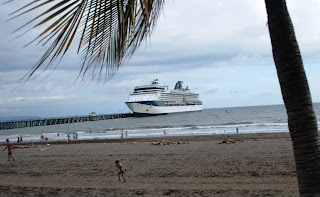
The tree is up, finally. As always, it’s beautiful and there is a railroad running under its branches, but this year, the branches are not real. The tree is fake, a consequence of my daughter having flunked an allergy test. She should have studied harder! On Thanksgiving weekend, we headed to the big city and shopped for trees that won’t make her sick for the holidays. We found a nice 7 ½ foot one at Hobby Lobby, already decked out with white lights. I felt my stars were aligned as it was on sale, two hundred bucks instead of four hundred, but then all the trees seemed to be on sale (but not as much as they are after the holidays, probably because they retail price is double what they think they can get for each tree. So we brought it home and got down to decorating.
This year I planned to start a new railroad. I got out my new train—a 1948 S-Gauge American Flier. It’d belonged to my step-grandfather. My grandmother gave it to me several years ago and I finally got around to getting the replacement pieces and was overjoyed to find that the train still worked. It’s heavy, made of steel, and features a Pennsylvania steam locomotive and a few cars. It also has a working pump car with two Gandy dancers who seemingly carry out the backbreaking work of propelling the vehicle. I was looking forward to having the locomotive pulling a load of cars and chasing the Gandy dancers around my tree. Besides, few people have an antique electric train running around their tree (perhaps because they’re a fire hazard?) and it’d give people something to talk about at holiday gatherings. But, for a reason I’ve yet to discover the locomotive would no longer run like it did when I checked it out. I think I need to rewire the engine as it draws in power from the wheels on the tender and the wires that bring the power to the engine are a bit frayed. Without having the time to take care of that, I got out my HO gauge train.
With Christmas music playing, we went to work on the tree. I can attest, it’s much easier to put up and artificial one and in matter of minutes, the tree was up and straight! Although I love real trees, I was thinking that I won’t have to worry about sap on my train tracks. I plugged it in. It was beautiful. All the lights were on… Well, almost all the lights were one, there was one section of strings in the bottom of the tree. Supposedly, if one light goes out, the whole string isn’t to go out and I was curious as to what had happened. There was a loose wire in the tree. That won’t do, I thought, so another trip was scheduled to the big city to return the tree. Meanwhile, a call was made and we discovered that the store was being overwhelmed with returns of this particular tree. Not a good sign.
Another trip to the big city was made. We returned the tree and began the shopping experience all over again. At Sears, my daughter found one she liked. I agreed, it was pretty even though I have always been a white light person and this tree had multi-colored lights. Also in its favor was the price. It was even cheaper than the Hobby Lobby tree (almost enough to cover the gas expenses for these two trips). I’ll take it,” I said, wanting to be out of the tree procurement business. The saleswoman went to the computer and put the information in and her face went long. According to her records they were out of that tree, but there was one ½ way across the state! That wouldn’t do! My daughter piped up and asked if we could buy the one on the floor (and idea I liked because I could see all the lights were working), and she agreed but said she had no boxes. “I’ll find a box,” I said. I brought the tree and hauled it home and by 9 PM on Thursday night, it was up and my train was running and all was well.
Everyone once in a while, one has to start new traditions. In 53 years of walking on this earth, this is my first artificial tree (I hope Baby Jesus and Santa don’t mind). Also, for the first time as an adult, I have a tree with multi-colored lights. But all is well and I bet I won’t still be vacuuming up needles this July!

































